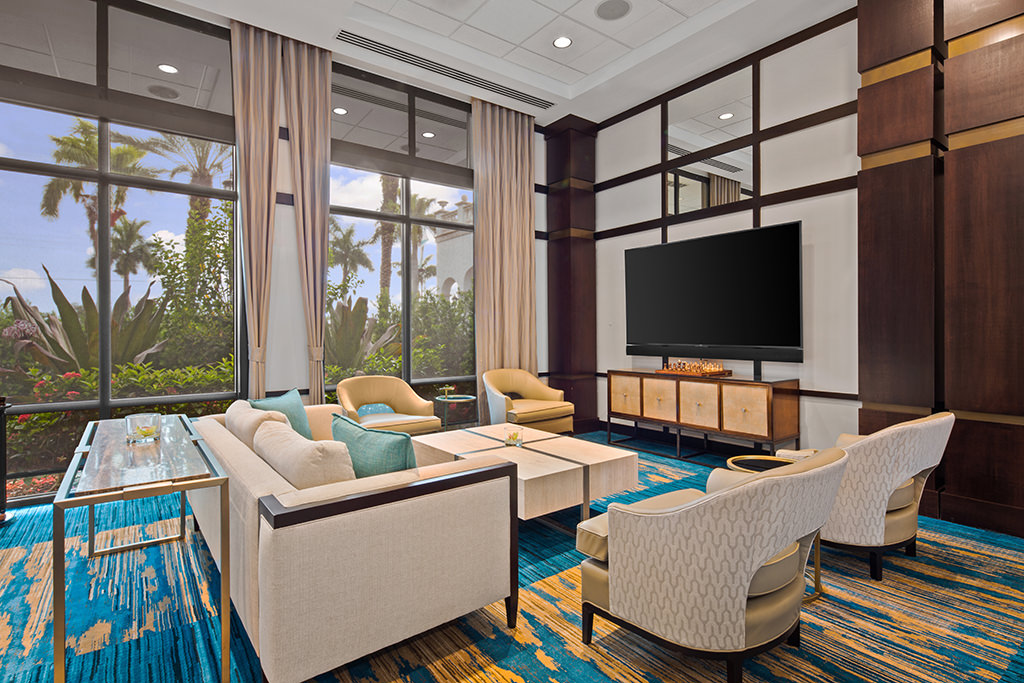HISTORY OF DRAPERY
As you peruse your Naples or Boca Raton home, pausing with a satisfactory smile for your luxury, high-end drapery hanging in perfect harmony throughout the motif, consider for a moment that the cloth bookend for your windows provide a great way to bring color and softness to a space, but they were a long time coming.
As Georgina O’Hara Callan shares for DesignSponge.com, the first curtains were made from animal hides that were placed over doorways and affixed by hooks. However, the stiff hides, which did not drape well at all, were abandoned in favor of textiles upon the development of Oriental civilizations in China, India, Persia, Assyria and Chaldaea. Rich textiles were so important to their culture that they also influenced their architecture. Ornamental forms specific to the weaving arts were then reproduced centuries later in their temples, palaces and tombs. Ancient Egypt’s choice of early textiles were linen and flax, followed by wool and later cotton and silk. The rest of the world only began to catch on after the Middle Ages, according to textile history experts at 1920-1930.com.
your luxury, high-end drapery hanging in perfect harmony throughout the motif, consider for a moment that the cloth bookend for your windows provide a great way to bring color and softness to a space, but they were a long time coming.
During the early centuries of the Christian era when Constantinople (known earlier as Byzantium and now as Istanbul) was the center of the Eastern Roman Empire, fine textiles were an important article of commerce. Depictions in paintings display their use as decorative fixtures within the glass mosaics of early Christian churches in Italy. Complete with trimmings, they look as though they had only recently been designed and made. Historic pictures from the Italian Renaissance era show draperies hanging for nearly every conceivable household purpose except at windows. Instead, they adorned primarily four-poster beds and doors, of all things.
The invention of glass windows by Italy in the mid-thirteenth century was a major factor in the development of drapery. In the Dark Ages, the walls of castles and fortresses were massive and windows often mere slits with which to observe an approaching enemy. Toward the beginning of the nineteenth century, windows got larger and interiors lighter, heralding the need for privacy. This ushered in the use of textiles with windows for both practical as well as aesthetic purposes, and mainly for the luxury high-end homes of the day. Their proliferation was also limited given the time and attention it took to sew them by hand. Over the centuries, textile production areas in Italy, France, Holland and the UK became well known for silk, linen, cotton and wool inspired by the treasures of the East and adapted for Western tastes, which included window dressings.
Upon the introduction of machines in the mid-nineteenth century, demand for drapery as well as upholstery fabrics was greatly increased. The best draperies were then designed and executed under the supervision of leading architects. It is important to note that if you recall the elaborate clothing of the late 19th century, you will see that it is mirrored in the fussy, ornate window coverings of the period along with overstuffed, decorated rooms. Synthetic colors introduced at this time also influenced prevailing decorative styles as well as the fabric colors selected for curtains and draperies.
Shares Georgia O’Hara Callan for DesignSponge.com, by the 1950s and 60s, curtains were essential components to most homes. Many had simple, plain curtains without elaborate top treatments, similar to the tailored shift dresses of the period and a far cry from the billowy, overdone window fashions of the late 19th century.
In modern times, curtains for luxury high-end homes might feature simple lace to the most elaborate layers of silk and detailed, swagged cornices. Greater respect for architectural details these days has produced a decorative style whereby simple curtain panels — in cotton, linen, silk or any synthetic fabric — adorn each side of the window. Some are functional; others are purely decorative. The higher the curtain is hung, the taller the room will appear. Curtain lining, intended for warmth and light insulation, may be simple or multilayered.
Talk to the Clive Daniel Home interior design experts like Maryann Forward, Associate ASID, in our Naples interior design showroom to get some ideas for dressing your windows with just the right draperies to match your modern, luxury high-end home. Call Maryann at 239-213-7845 or email [email protected].




